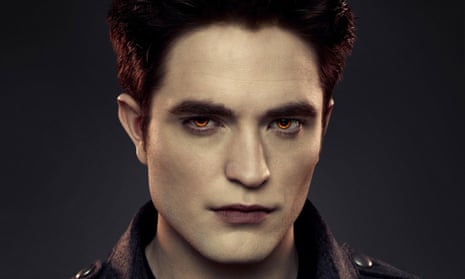Nick Groom concludes this invigorating study of vampires by suggesting that we should try to be a bit more like them. Thankfully this doesn’t entail hanging shiftily around blood donor banks or having your cuspids filed to a point (that’s a thing apparently – although heaven knows where you’d find a dentist who’d oblige). Rather, Groom wants us to think about vampires as a way of re-enchanting the contemporary human condition.
Before we can do that, though, we need to know what we’re dealing with. Groom’s pet peeve is the way recent scholarly work has wrenched the figure of the vampire from its political and social origins and turned it into an ahistorical archetype on which to dump any passing concerns. For instance, much has been written about how the vampire came to prominence at the end of the 19th century, courtesy of Bram Stoker’s Dracula, as a way of articulating fears about the British empire fighting, or biting, back. But the stubborn fact remains that Stoker’s count comes from Transylvania, a European locale not so far from home. It was more likely that the pale, etiolated Wallachian nobleman resonated with contemporary readers as the avatar of an ailing British aristocracy that was finding it increasingly tricky to keep itself buoyant during an agricultural depression (Dracula does travel with 50 boxes of his native soil, after all).

In other words, Groom wants to construct a rigorous genealogy of the vampire and, to this end, picks the early 18th century as his place to start. Before this there had been myriad tall tales about bloodsucking creatures popping up all over “the Levant”. In Serbia you could spot the undead by their ruddy complexions as a result of all that snacking on friends and family, while in Slavonic folklore a male vampire would make a point of returning for a conjugal visit, to be followed, nine months later, by the arrival of a baby without a skeleton. On Mykonos there was a creature called the Vrykolakas, who rose from the dead and ran around aggressively until stopped by some brave islander reaching into the decaying corpse and tearing out its heart.
What turned this motley crew of stinking, sexed-up roustabouts into vampires, Groom contends, is their run-in with Enlightenment thought. From the early 18th century the doctors, scientists and theologians of western Europe started not only to collect and codify these bloodthirsty folktales but also to try to come up with rational explanations. Perhaps the peasants had simply been drinking too much hoppy beer and imagined the whole thing. Or maybe they were so flummoxed by the shifting borders of the decaying Habsburg empire that this was their way of expressing panic about outsiders. The Protestants of northern Europe, meanwhile, thought it all nonsense peddled by the Orthodox Church.
The upshot of this cultural encounter was that vampires – both the possibility and the impossibility of them – became what Groom calls “the stuff of thought”, implicated in every aspect of medical, technological and even theological life. Inoculation against smallpox now became a source of terror: someone knew someone who knew a boy from Peckham who had received the usual prophylactic dose of cowpox and started chewing the cud. Grafting teeth from the dead to the living – a rudimentary form of dental implant dating from the days of Henry VIII – was now a perilous activity, in the course of which you were likely to end up with venereal disease from your donor. Even the Roman Catholic and Protestant churches found the vampire provided food for thought thanks to the way it echoed the rite of holy communion, during which the congregation lined up to drink Christ’s blood.
This insistence on the historical specificity of vampires is carried through to Groom’s account of Dracula, in which he shows that while Stoker’s classic of 1897 plays off gothic tropes from earlier in the century, it is also strenuously up-to-date. The text is stuffed with such commodified brand names as Kodak cameras and Winchester rifles. Mina Murray is a dab hand at typing and shorthand, while her fiance Jonathan Harker spends the first two pages of the novel pondering train timetables and eastern European racial migration.
It is no accident, Groom maintains, that Dracula chooses this moment of hypermateriality in which to make his big entrance: it is his job to connect rational, industrial Britain with older mysteries. This is also why, a century later, vampires again took over the world in the TV series Buffy the Vampire Slayer and True Blood, and the Twilight book and film franchise. At exactly the moment when human life was becoming circumscribed by the digital datasphere, vampires were a reminder that some aspects of experience are simply too slippery and strange to be captured in an algorithm. And it is to keep us open to that numinous unreality, Groom says, that we should continue to invite vampires across the threshold and into our imaginative lives.

Comments (…)
Sign in or create your Guardian account to join the discussion